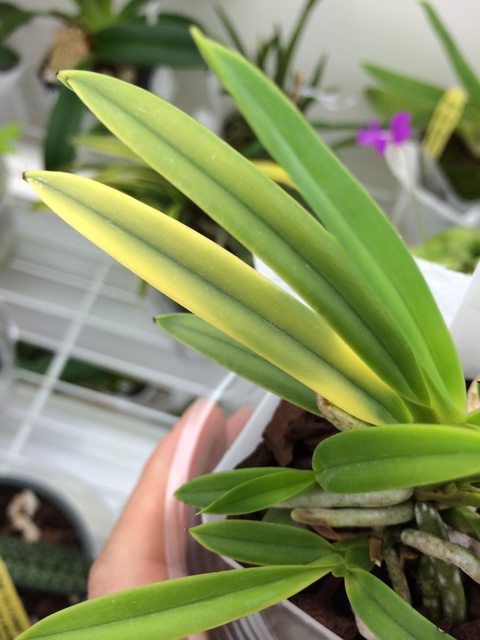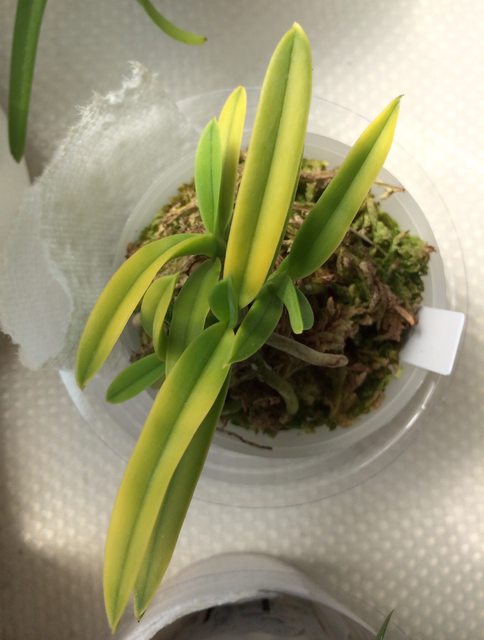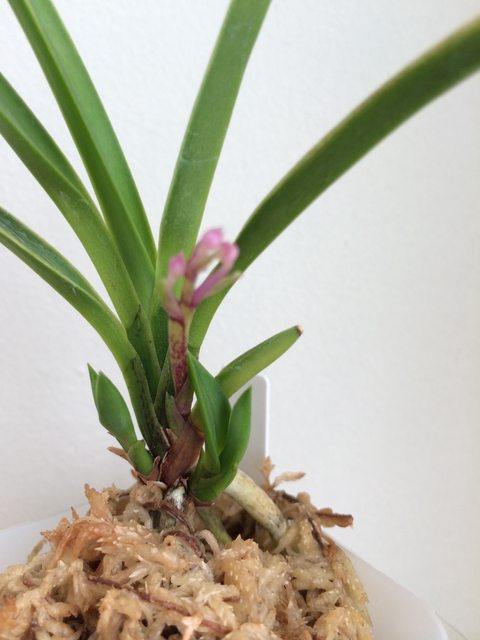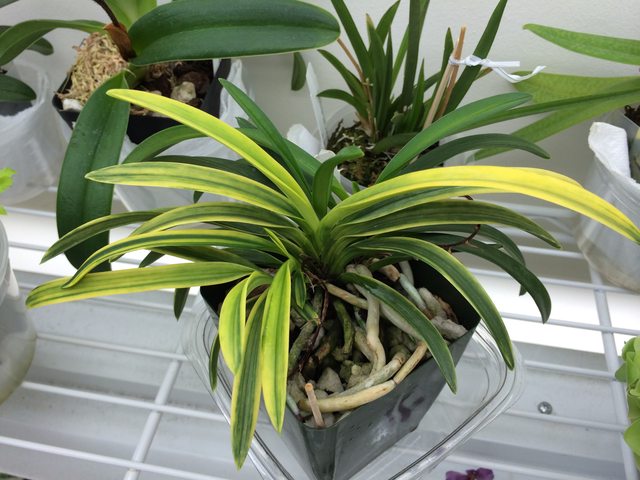Happypaphy7
Paphlover
My green Kogane nishiki had only one leaf showing slight yellow earlier in the summer by the window.
I moved it from sphag into bark mix and moved it under T8 light (about one foot under the light) about two months ago.
The yellowing has been slowly progressing (the third leaf form the top on the left side in the photo below), and the next leaf is starting to show a little bit of yellow.

Kinyuko has been in the same spot since winter, which is a very bright window, however, the bright yellow has significantly diminished and now it has a lot more green than yellow.
I don't know what to do to get the yellow back.

This is a relatively newly registered variety out of Korea.
I don't know the name in English, but it is a mutation from Amami strain.
It's one of those whose new leaves show bright yellow patches and then disappears later in season.
I'm posting the spike and buds because of its beautiful clear light pink color.
Flowers will be white.
This is a practice peace.

This is Fugaku I got from In-Situ orchids on eBay (great seller!!!) about two months ago.
It came with two spike each bearing about 10 and 7 large flowers, which is main reason I bought the plant along with the strongly colored leaves.
It is rather big plant, but I love this variety for such diversity!
Surprisingly, it is sending up two more spikes!!! Yay!!!

I moved it from sphag into bark mix and moved it under T8 light (about one foot under the light) about two months ago.
The yellowing has been slowly progressing (the third leaf form the top on the left side in the photo below), and the next leaf is starting to show a little bit of yellow.

Kinyuko has been in the same spot since winter, which is a very bright window, however, the bright yellow has significantly diminished and now it has a lot more green than yellow.
I don't know what to do to get the yellow back.

This is a relatively newly registered variety out of Korea.
I don't know the name in English, but it is a mutation from Amami strain.
It's one of those whose new leaves show bright yellow patches and then disappears later in season.
I'm posting the spike and buds because of its beautiful clear light pink color.
Flowers will be white.
This is a practice peace.

This is Fugaku I got from In-Situ orchids on eBay (great seller!!!) about two months ago.
It came with two spike each bearing about 10 and 7 large flowers, which is main reason I bought the plant along with the strongly colored leaves.
It is rather big plant, but I love this variety for such diversity!
Surprisingly, it is sending up two more spikes!!! Yay!!!




